Making Art, Making Change: Five Women Creatives You Should Know
These artists are proof that imagination can transform our culture, our national debates, and ourselves.
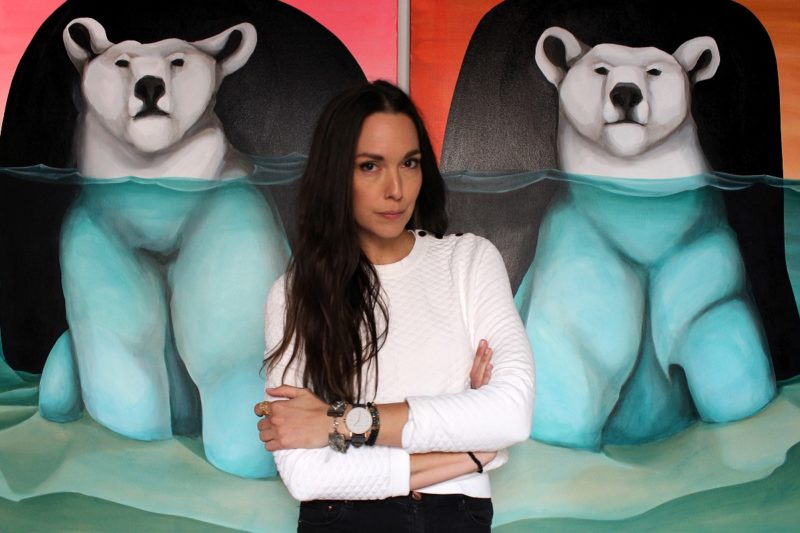
Both art and advocacy can change thinking, build empathy, and inspire emotion. So it’s only natural that art and advocacy have found their way into a relationship, influencing and complementing each other.
But, working as a reproductive rights advocate, I still find myself challenged by the constant task of shifting stigma—making my way into people’s hearts and changing their minds. Changing minds about abortion or other stigmatized topics often requires relating on an emotional level. And more and more, artists are using creative spaces to share experiences, ask tough questions, get uncomfortable, and connect. From sharing abortion stories to creating literary salons, these five artists are changing the landscape of art and advocacy.
Poppy Liu
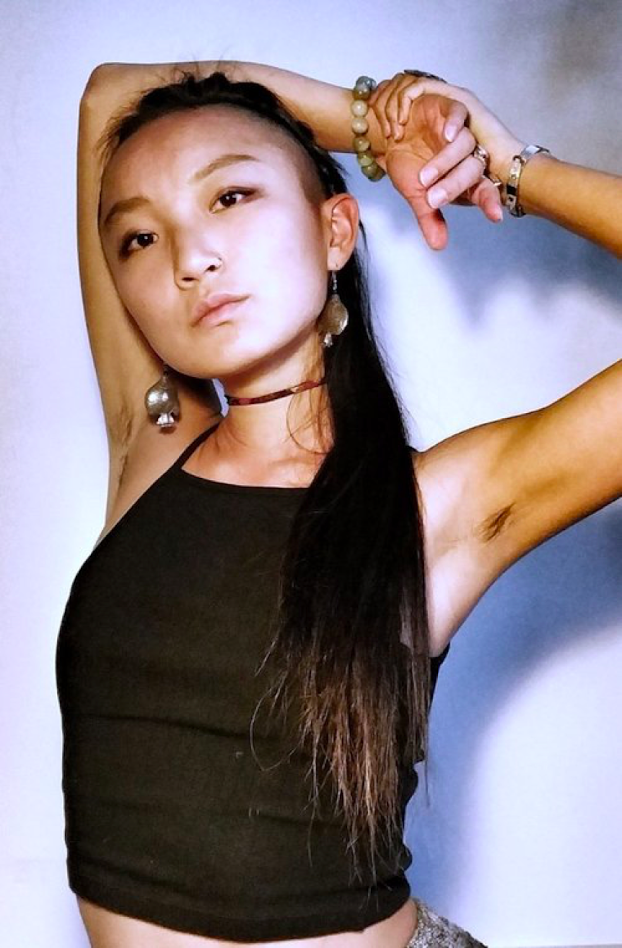
“Stories remind us that we exist and that we deserve to exist.”
To meet Poppy Liu, 26, is a bit like swimming in the ocean. An indescribable force and strength surrounds her, and once you walk away, you feel as if your anxiety and stress has been replaced with love and comfort. You find yourself smiling—a lot.
Born in Xi’an, China, Liu immigrated to Minnesota at the age of 2; moved to Shanghai, China, at 14; and has been living in New York City for the past four years. While at Colgate University, she wrote a play called This Is Not A Play About Sex (TINAPAS) to explore why sex has so little to do with intimacy and pleasure in the United States. With its critical conversations about privilege, power, and rape culture, the play captivated the campus. Colgate licensed the rights and continues its production, even requiring viewing for all fraternity pledges.
Witnessing how powerful storytelling is at disrupting spaces of silence, Liu created Collective Sex, a Brooklyn-based grassroots movement that uses storytelling to end silence around the topics of sex, body, intimacy, and identity. The group has evolved from weekly living room conversations to monthly storytelling performances and creates media rooted in its mission of “decolonizing storytelling.”
“Storytelling is the way that we reclaim our own identities,” says Liu. “We need stories to find ourselves and to heal ourselves. Because of colonialism, the loudest stories were told only by the privileged few. The rest of us were left wondering where we existed or if we even existed at all. Being able to tell our own stories, in our own words, helps us to reclaim some of that identity loss.”
Liu told her own abortion story at a Collective Sex event and opened for others to share their own. She received so much positive feedback that she eventually developed the film Names of Women based on her abortion story. The film premiered in New York City earlier this year and tours nationally, and Liu allows the public to host their own screenings at no cost.
Her next project, Mercy Mistress, is a web series based on the autobiographical story of Yin Q, a queer, Chinese-American professional dominatrix in New York City.
You can follow Liu’s work on Instagram and Facebook.
Sarah Edwards
“Finding compelling ways to connect with people is fundamental to spreading ideas.”
The art created by 34-year-old Sarah Edwards hit me with the oddest combination of comfort and alarm when I first saw it. Here I was, staring at these stunning portraits of beautiful animals. Yet I felt a bit worried, maybe even a bit sad, because these animals may not exist much longer. It was confusing, and it made me pause and reflect. What makes Edwards’ art so unique is its ability to use positive, nonviolent imagery that is completely absent of human intervention to showcase humanity’s effects on the rest of the world.
Edwards grew up in Cupertino, California, where she quite literally found a deep connection to art and nature at a young age. She was in first grade when the 1989 earthquake hit the Bay Area. “I was doing a drawing when the earthquake started, and I remember taking it with me as I took cover under a table so that it wouldn’t get wrinkled,” she recalled. “It was basically art or nothing.”
From there, she went on to study fine art, and ultimately landed on painting and printmaking at Berkeley. While her skills grew, Edwards remained focused and connected to nature, particularly how people interact with it. It’s difficult to discuss how human behavior affects nature without examining the devastating effects of climate change—a topic that resonated with Edwards quickly.
“Over time, I watched this debate unfold and become increasingly polarizing, while at the same time watching species go extinct, oceans being depleted, and ice caps disappearing. I felt helpless to do anything.”
But she did do something. Edwards has looked for, and is succeeding, at using her artwork to inspire reflection, conversation, and even action around climate change. She has worked with the Sierra Club, the Lower Eastside Girls Club, and is currently partnering with the Kenya Wildlife Trust, donating a portion of all art sales directly to their conservation efforts.
“Sarah’s pieces speak volumes about the very real threats facing our planet and its wildlife, including Kenya’s iconic big cats,” said Lucy Russell, chief executive officer at Kenya Wildlife Trust. “Thanks to Sarah’s partnership, we can strengthen our efforts to protect these incredible animals and other predators, through conservation initiatives that strike the balance between science and community.”
Edwards said, “If sharing ideas through beautiful images allows people to receive them and sit with them instead of shutting down at the first sign of confrontation, then that’s a big step. Even if it’s just for a moment and just one person at a time.”
You can view Edwards’ work through her website or Instagram.
Georgia Clark
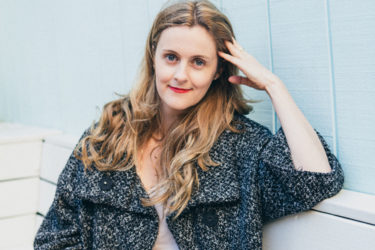
“Truth as evidenced by experience is power. It connects, inspires, and educates.”
A conversation with Georgia Clark is as comforting and inviting as a warm cup of coffee. Should you actually be drinking said coffee when you meet her, there’s a high chance you may do a spit-take thanks to Clark’s sly wit and humor. The Sydney, Australia, native is an accomplished author and improv performer, and she recently launched one of the most brilliant live events I’ve seen in New York City.
“I wanted to create a female storytelling night with a strong hook,” she recalled. “I’d also been having conversations with my mum, Jayne, about her feeling of disappearing as an older woman.” Cue the lightbulb.
Generation Women is a unique literary salon that brings women of all ages together once a month for a performance unlike any other. Reading a story surrounding a specific theme, each show features one woman from each age group of 20s, 30s, 40s, 50s, 60s, and 70s and up.
“Our show specifically is a diverse, multigenerational experience that gives a platform to older women who are not valued in the way they should be in popular culture,” Clark said. By sharing knowledge between the generations, Clark and her team are creating a more empathetic, female-focused future.
Whether she is working on her next book or working alongside partners Jessica Paugh and Camila Salazar to produce Generation Women, Clark is focused on ensuring diverse voices that reflect our real world are heard. Previous show themes have ranged from overcoming fake news to “My Alter Ego.” The beauty of the show is not only that the topics relate to a specifically female experience, but that they span across decades. You get to hear a how specific theme can change outcomes, interpretations, and emotions in the timeline of life.
Clark is a magnificent model of how actually doing the hard work when you have a stellar idea can succeed and impact others. For those looking to get into storytelling, she has some solid advice: “Befriend your local storytelling night, or ask your favorite bar if you can host an event on their slower nights. Listen and watch good storytellers critically. And know that perseverance is more important than talent.”
To learn more about Clark’s work, you can visit her website, and follow Generation Women on Facebook and Instagram. There are also upcoming shows on November 17 and December 4.
Favianna Rodriguez
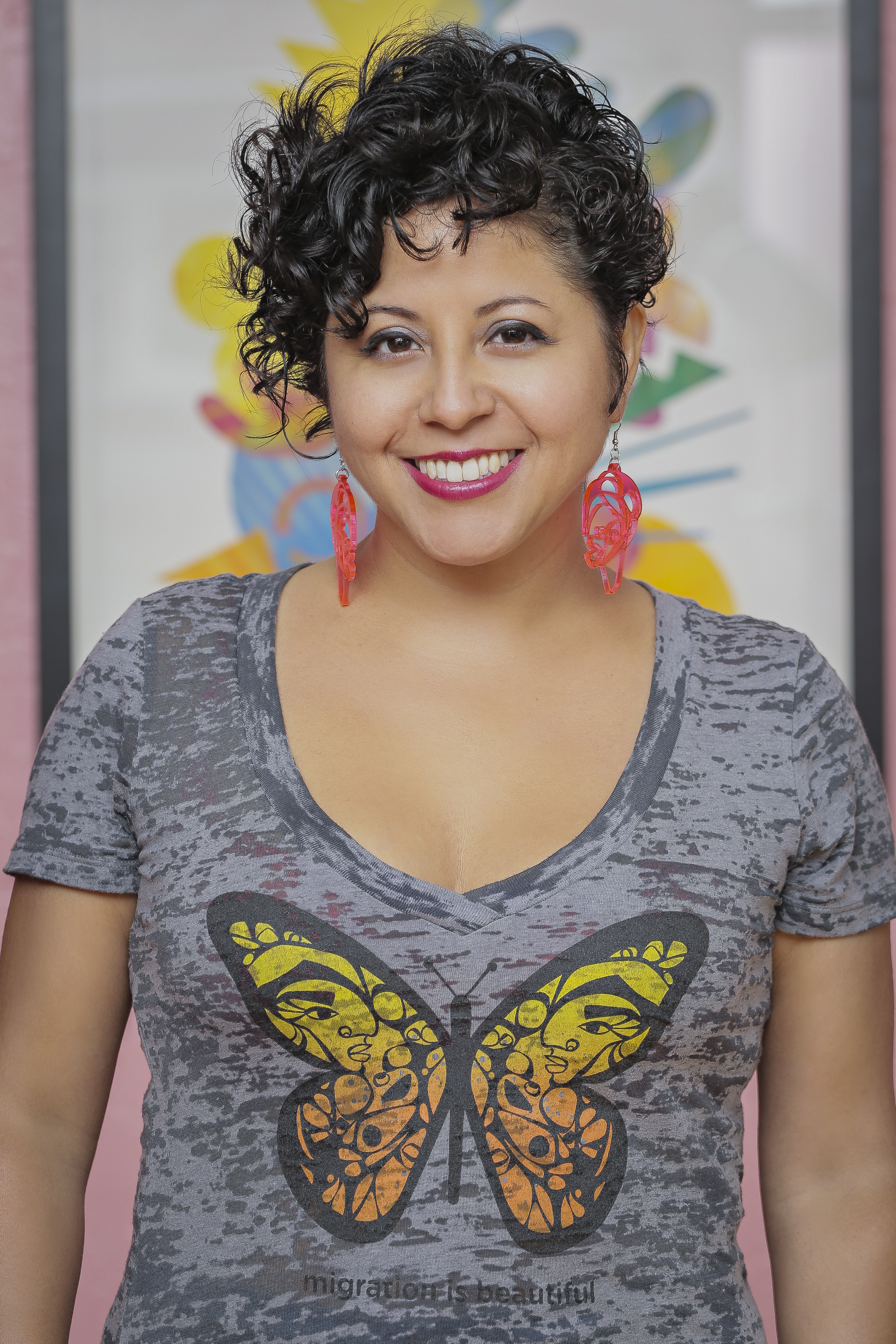
“More than ever we need tools to be able to access our imagination and help us resist this backward culture we are experiencing.”
Although Favianna Rodriguez has been creating art that supports social justice movements for more than a decade, she is still being discovered as a radical printmaker by new audiences. Success for her was never defined as exhibiting in a gallery. Rather, the Oakland, California, native is much more focused on how art can bring about a more fair and equitable future.
“Art has the power to transform culture around us, to inspire, and to demonstrate the kind of world that we want in the future,” she said. “Art speaks to people’s heartspace. It is a very powerful, yet an underused tool when it comes to activism.”
Rodriguez, 39, is the daughter of Peruvian immigrants who supported her interests and natural talents. In college, she traveled to Los Angeles to participate in an intensive workshop with other Latina artists. It was her first time exhibiting in a formal art space and the first time she was called an “artist” by peers.
In 2009, she co-founded Presente.org, an organization committed to the political empowerment of Latinos. Two years later, she co-founded CultureStrike, a national organization that works with artists of all disciplines to change the country’s conversation around immigration, climate change, and racial justice. “Our goal is to build a pro-immigrant culture in the United States and help end xenophobia.”
Always looking to innovate and connect the cultural with political, Rodriguez immerses herself in different movements. She is continuously exploring her identities—Latina, queer, ally to the undocumented community, artist. And she never stops exploring how art is transforming institutions.
“The entire cultural space is moving much faster than politics,” she said. “More and more people from the cultural sector are exploring ways to take a stand and make changes in their own institutions and spaces.”
She’s right. In Hollywood, actresses are making a statement against sexual harassment and assault. Museums are taking stands around inclusion. And in visual arts, more artists are addressing issues of race and climate justice.
Through art, Rodriguez has learned to think critically, form her own opinions, and steer her own path. Yet she credits those around her: “I am inspired by the ways in which others are trying to change the world around them, and I translate this inspiration into images and messages.”
You can follow Rodriguez on Twitter and learn more about CultureStrike.
Tatiana Gill
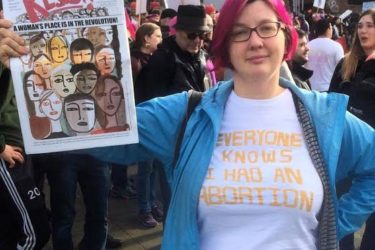
“Through sharing my stories, I have healed myself and helped heal others.”
Truth be told, I have met a lot of amazing activists and advocates in my life though Amelia Bonow, creator of Shout Your Abortion. The woman is like a magnet for electrifying and creative people. Tatiana Gill happens to be one of those people.
Gill is a Seattle-based cartoonist taking on subjects like mental health, feminism, and body positivity with pure strength and vulnerability (her body-positive print of the 1980s cartoon rocker Jem may be my most favorite thing). It was Bonow who suggested that she submit her work to Comics for Choice, an anthology of comics about a wide range of abortion experiences.
While Gill has created dozens of self-published comic books and teaches comics, submitting her own abortion story about the shame and isolation she felt when she was 26 was a new experience.
“Drawing it brought up a lot of tough emotions, but was ultimately cathartic to get out on paper,” she said. It was exciting and scary, but Gill truly believes in the power of storytelling.
“Telling our stories is one of the most powerful acts we can do and is integral to a healthy community. It helps us understand, process, and have compassion for our own experiences and the experiences of others.”
From Calvin and Hobbes to Wonder Woman, comics have been an integral part of culture in the 20th century. What’s exciting is the way artists like Gill are using them as a tool to help policymakers understand the perspectives of those who are underrepresented in mainstream media. Putting her own abortion shame into a medium that allows full creative control transformed Gill into a powerful stigma buster.
Gill recently finished a one-page comic biography of Seattle civil rights leader Samuel McKinney and a graphic novel collaboration about corruption. Her latest comic book, Wombgenda, includes her autobiographical comics about reproductive health, body image, and other feminist issues.
Check out Gill’s work on her website, and follow her on Twitter.
Art, in any form, has great power to shift stigma, educate the public, dispel myths, and contribute to real culture change. It’s been so restorative for me personally to meet and learn about women who are using their voice and talents not just to express themselves, but to contribute to national conversations in a positive way. I hope they inspire you too.
